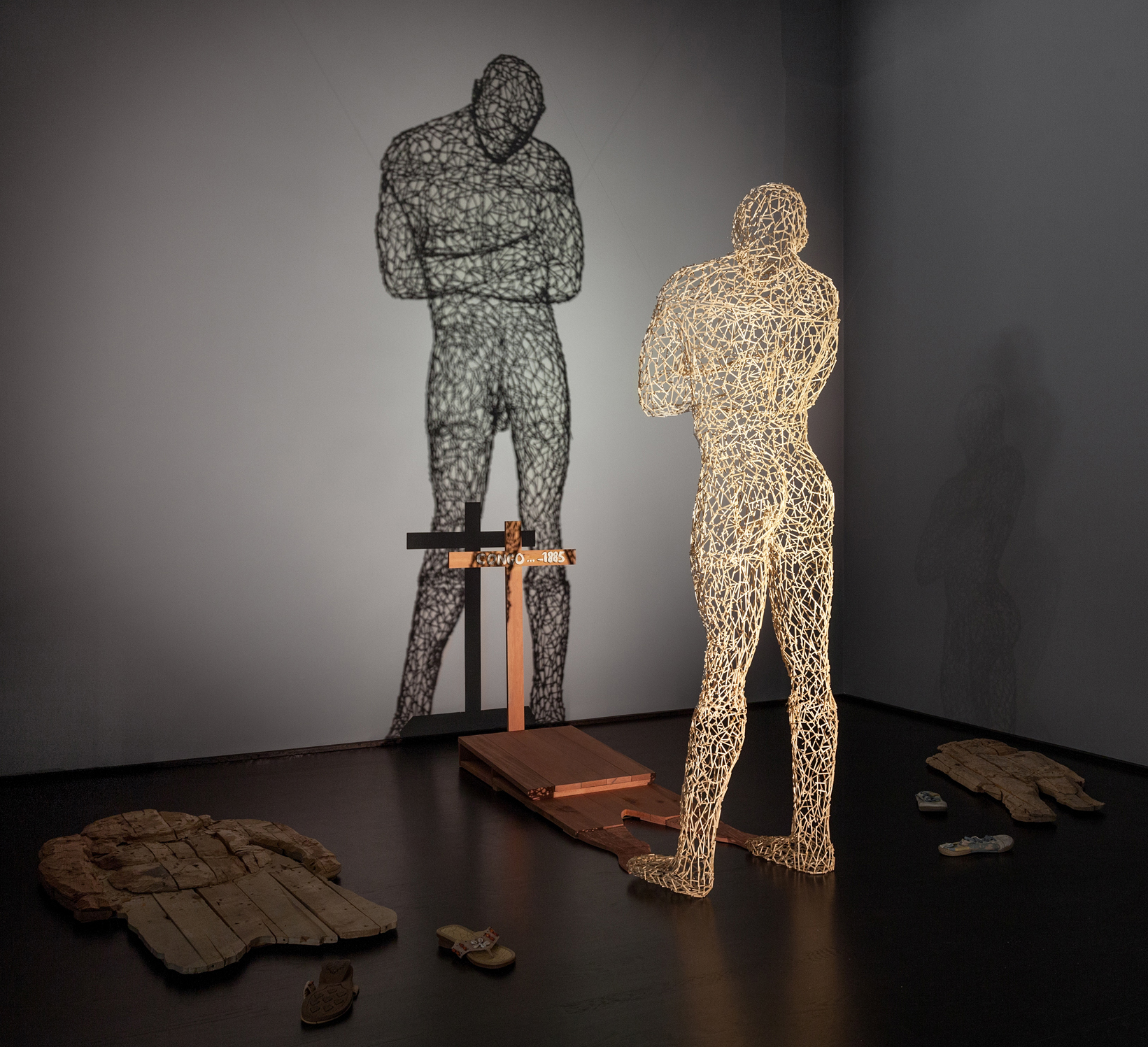UCLA professor brings African art to LA community

UCLA professor Mary Roberts helped organize “Shaping Power,” a LACMA exhibition featuring art from the Luba Kingdom of Central Africa.
By Alicia Sontag
July 15, 2013 12:08 a.m.
A wooden sculpture depicts a woman kneeling and holding a seat. She wears blue glass beads around her neck, and a contemplative gaze crosses her elegant features as she looks inward with downcast eyes.
This figure, called “Caryatid Stool,” is one of the many pieces of art from the Luba Kingdom in central Africa on display in Los Angeles County Museum of Art until Jan. 5.
Mary Roberts, professor of world arts and cultures and consulting curator of African arts at LACMA, has contributed to a new temporary exhibition titled “Shaping Power: Luba Masterworks from the Royal Museum for Central Africa.” This exhibition inaugurates a permanent new program and gallery dedicated to the arts of Africa at LACMA.
“Shaping Power” is a joint collaboration between LACMA and the Royal Museum for Central Africa. The exhibition will display masks, thrones and other pieces of art on loan from the Belgian museum that capture the importance of wooden royal sculptures in the foundation and expansion of the Luba Kingdom.
“Many of the works have rarely been lent, and some have never been lent before,” Roberts said. “They represent the most celebrated works of Luba art, which is one of the most important sculptural styles of central Africa.”
The Luba Kingdom was a precolonial central African state, and one of the most influential in African history, Roberts said. The kingdom’s apex, between the 18th and early 20th century, was marked by a territorial expansion by Luba kings through the gift giving of wooden sculpture art, such as the ones displayed in the exhibition.
“These are objects that were instrumental to shaping power and empowering rulers,” Roberts said. “Certain groups wanted to participate in the aura of Luba kingship, and, as a result, they adopted the trappings of Luba royalty as a way to emulate Luba kingship practices and prestige.”
The idea for the exhibition first began when Roberts learned that the Royal Museum for Central Africa was closing for renovations. She then arranged to borrow its artifacts on loan from the museum so the artifacts could be displayed in Los Angeles.
Nancy Thomas, one of LACMA’s deputy directors and a UCLA alumna, said she watched the gallery grow from an idea into an exhibition over the last year. Thomas currently oversees the exhibition.
“I have a particular interest in African art, and I felt that it was missing (from LACMA),” Thomas said. “We had a small collection, but it is our goal to make the collection more prominent and permanent.”
“Shaping Power” represents a new beginning for the arts of Africa in LACMA, as African art displays in the United States are rare, and there are only a few galleries in Southern California.
Besides “Caryatid Stool,” the exhibition will also display 25 other traditional Luba art pieces from the Royal Museum for Central Africa. Another sculpture, “Congo: Shadow of the Shadow” by Aimé Mpane, borrowed from the Smithsonian Institution’s National Museum of African Art, is made entirely of matchsticks. This contemporary piece balances fragility and strength, and ultimately seeks to demonstrate the reshaping of power in the period of colonial rule.
“Shadow of the Shadow” complements the traditional Luba art also on display by offering a way to see the past through the eyes of the present and starting a dialogue with the historical work of the exhibition, Roberts said.
Professor Roberts’ consulting curatorship with LACMA has helped strengthened the museum’s ties with UCLA through strong overlap between the curriculum of the courses she teaches about Luba art and the works on display. She sees the exhibition as an opportunity for students to witness artcoming to life and to engage with the public.
Roberts teaches courses on museum studies, as well as seminars addressing Luba arts. She said one of the most important pillars of the departmental mission is the concept of art as an agent of transformation, and the importance of theory and practice.
“‘Shaping Power’ thus connects directly to aspects of the world arts and cultures curriculum, by showing how art can shape power and affect change in our world today,” Roberts said.
Elaine Sullivan, a doctoral student in world arts and cultures worked with Roberts to install the exhibition. Sullivan said the exhibition has given her a rare opportunity to not only see the objects in Los Angeles, but also to spend time thinking about and researching these artifacts.
“The installment of the exhibition allowed me to have hands-on experience within the gallery, rather than just read textbooks, and to put the museum theories into practice,” Sullivan said.
Roberts said the exhibition is important to L.A. and UCLA students because the works can teach the community about the history and richness of an African culture, and also about such an important kingdom.
“For me, as a curator and professor of African art, works of art are vehicles through which we can learn about philosophy, history and aesthetics, as well as values that are integral to African peoples and cultures,” Roberts said.

